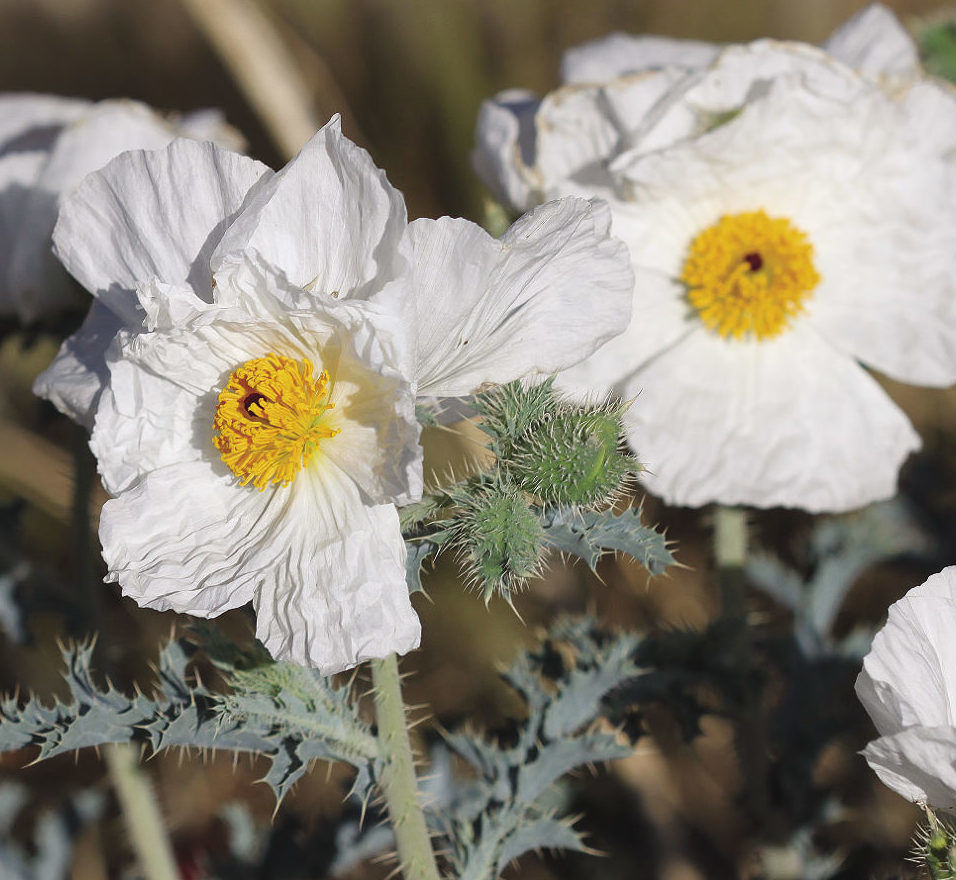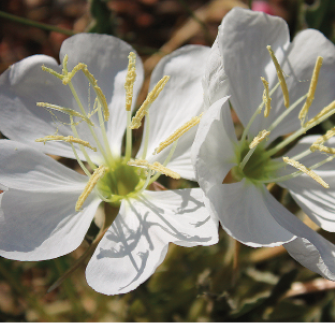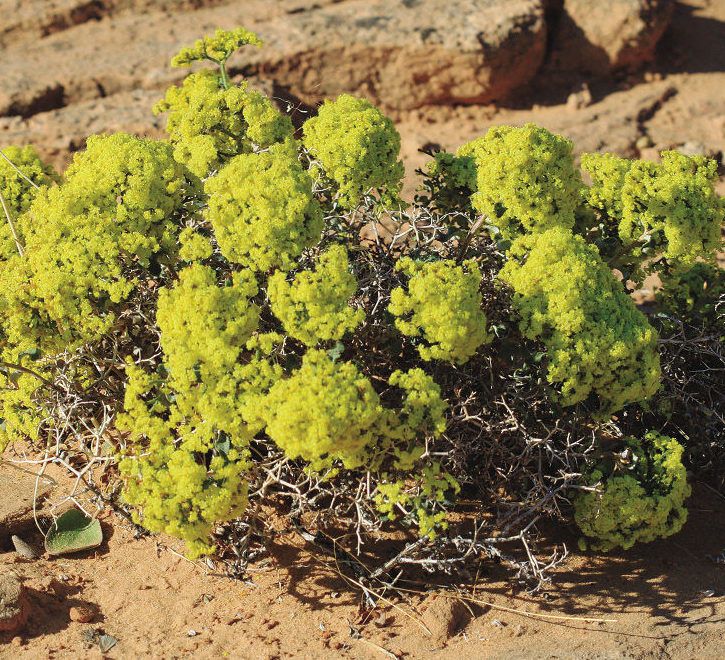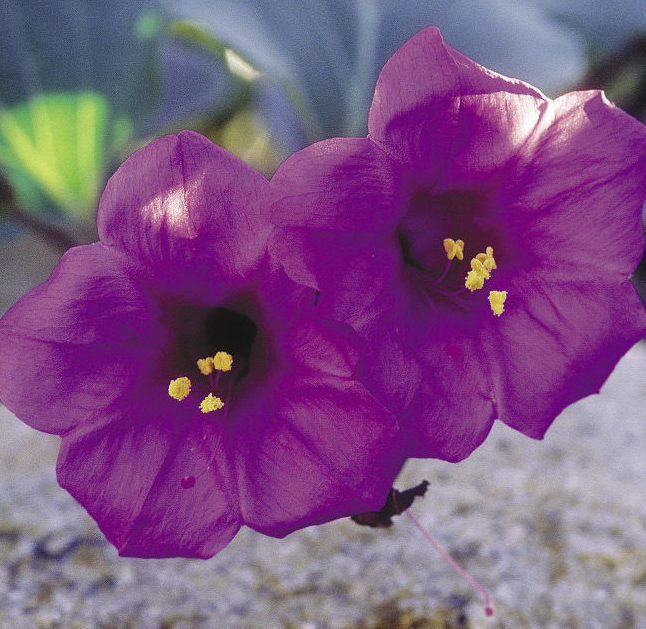1. Prickly Poppy

Name: Argemone spp. and cvs.
USDA Hardiness Zones: 8 to 11
Size: 18 to 36 inches tall and wide
Conditions: Full sun; lean, sandy soil
Prickly poppy exhibits flowers that are stunningly large and several inches wide, and the blooms last for several days. The name pretty much says it all: Every part of the plant—save the flower petals and the moderately sized black seeds—is covered with sharp thorns. This plant is drought tolerant.
2. Tufted Evening Primrose

Name: Oenothera caespitosa
Zones: 4 to 8
Size: 1 foot tall and wide
Conditions: Full sun; dry, lean soil
Tufted evening primrose, a plant native to the Southwest, accomplishes the rare feat of having large flowers that open at dusk and close at dawn. The plant’s specific epithet—caespitosa—means “stemless”; this gem erupts directly from the ground and sends up both leaves and disproportionately big blooms without visible support. Its large four-petaled flowers emerge pure white and wither to a pinkish hue with daylight. This evening primrose is short-lived. While the original plant might not survive winter, its seedlings will find places of their own and live for many years.
3. Yellow Crispleaf Shrubby Buckwheat

Name: Eriogonum corymbosum var. glutinosum
Zones: 5 to 9
Size: 1 to 2 feet tall and 2 feet wide
Conditions: Full sun; dry, sandy soil
A common dramatic bloomer in the arid Southwest, yellow crispleaf shrubby buckwheat is characterized by hundreds of tiny flowers that mass into 1- to 3-inch-diameter heads. Each individual flower has about a three-day life cycle, but each head may continue to bloom for a significant period. Full sun, gritty soil, and rapid drainage are required for success. Yellow crispleaf shrubby buckwheat combines brilliant coloration, dense form, and unbelievable survivability—all in one package.
4. Colorado Four O’clock

Name: Mirabilis multiflora
Zones: 5 to 10
Size: 18 inches tall and 4 to 6 feet wide
Cconditions: Full sun to partial shade; dry soil
Colorado four o’clock has a beautiful flared midpurple “flower,” which—despite its name—does not open at 4 o’clock but later in the day and begins to close with the rising sun. Its true flower is a small whitish bloom surrounded by the 1- to 3-inch-long purplish bracts. Native throughout the Southwest, it may be found on the northeast side of an evergreen, where snow lingers the longest. Although only 18 inches tall, the plant can spread with abandon, so give it plenty of space.
Bob Pennington is the president of Agua Fria Nursery in Santa Fe, New Mexico, and a founding member of the Santa Fe Botanical Garden.
Photos: (1, 2 and 3), courtesy of Bob Pennington; (4), Bill Johnson


















Comments
Log in or create an account to post a comment.
Sign up Log in